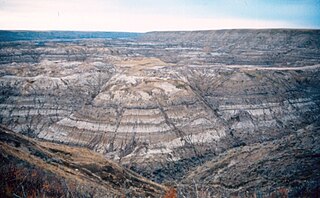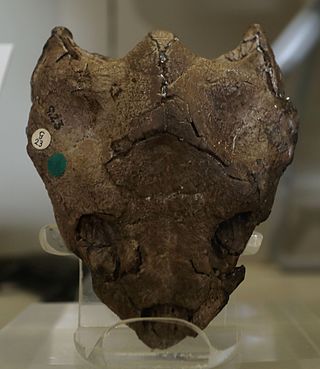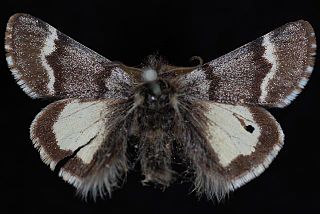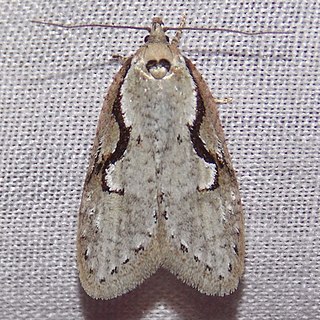
Entomology is the scientific study of insects, a branch of zoology. In the past the term insect was less specific, and historically the definition of entomology would also include the study of animals in other arthropod groups, such as arachnids, myriapods, and crustaceans. This wider meaning may still be encountered in informal use. The field is also referred to as insectology in American English, while in British English insectology implies the study of the relationships between insects and humans.
Parectypodus is an extinct genus of mammals that lived from Late Cretaceous (Maastrichtian) to Eocene time in North America. It is a member of the extinct order of Multituberculata, suborder Cimolodonta, family Neoplagiaulacidae. It was named by G.L. Jepsen in 1930.
Baiotomeus is a genus of mammals from the extinct order of Multituberculata. It is known from the Paleocene of North America.
Anconodon is an extinct genus of mammal from the Paleocene of North America, and thus lived just after the "age of the dinosaurs". It was a member of the extinct order Multituberculata within the suborder Cimolodonta and possibly the family Cimolodontidae.

Gryposaurus was a genus of duckbilled dinosaur that lived about 80 to 75 million years ago, in the Late Cretaceous of North America. Named species of Gryposaurus are known from the Dinosaur Park Formation in Alberta, Canada, and two formations in the United States: the Lower Two Medicine Formation in Montana and the Kaiparowits Formation of Utah. A possible additional species from the Javelina Formation in Texas may extend the temporal range of the genus to 66 million years ago.
Baiotomeus is a genus of mammals from the extinct order of Multituberculata. It is known from the Paleocene of North America.

The Horseshoe Canyon Formation is a stratigraphic unit of the Western Canada Sedimentary Basin in southwestern Alberta. It takes its name from Horseshoe Canyon, an area of badlands near Drumheller.

Schinia, commonly called flower moths, is a large genus of moths belonging to the family Noctuidae. The genus has a Holarctic distribution with the vast majority of species being found in North America, many with a very restricted range and larval food plant.

Albertonykus is an alvarezsaurid dinosaur from the Maastrichtian-age rocks of the Horseshoe Canyon Formation of Alberta, Canada. It is known from forelimb and hindlimb remains from multiple individuals. All but two of the specimens come from a bonebed dominated by Albertosaurus, located at the top of Unit 4 of the Horseshoe Canyon Formation, dating to ~68.5 million years ago.

Pseudeva is a genus of moths of the family Noctuidae.

Dorsetochelys is an extinct genus of turtle from the Early Cretaceous of southern England and northwestern Germany.

Abagrotis alternata, the greater red dart or mottled gray cutworm, is a moth of the family Noctuidae. The species was first described by Augustus Radcliffe Grote in 1865. It is found in eastern North America, from New Brunswick west across southern Canada to western Alberta, south to Arizona, New Mexico and the Gulf of Mexico.

Acronicta interrupta, the interrupted dagger moth, is a moth of the family Noctuidae. The species was first described by Achille Guenée in 1852. It is found across southern Canada south of the boreal forest, from New Brunswick west to eastern Alberta, south to Georgia, Nebraska and Arizona.

Syngrapha microgamma, the little bride looper moth, is a moth of the family Noctuidae. The species was first described by Jacob Hübner in 1823. It is found in much of Canada south in the east to southern Maine, northern New York, and the Great Lakes states. In Europe, it is found from Fennoscandia and central Europe east to mountains eastern Asia.

Schinia meadi, or Mead's flower moth, is a moth of the family Noctuidae. The species was first described by Augustus Radcliffe Grote in 1873. It is found in western North America from south central Saskatchewan and central Alberta west to south central Washington, south to Arizona and New Mexico.

Trionyx is a genus of softshell turtles belonging to the family Trionychidae. In the past many species in the family were classified in this genus, but today T. triunguis, the African or Nile softshell turtle, is the only extant softshell still classified as Trionyx. The other species still assigned to this genus are only known from fossils. T. triunguis is a relatively large, aquatic piscivore.

Leucobrephos brephoides, the scarce infant moth, is a moth of the family Geometridae. The species was first described by Francis Walker in 1857. It is found in North America from Yukon to Labrador and south to New York and southern Alberta and British Columbia.

Semioscopis packardella, also called Packard's concealer moth or Packard's flatbody moth, is a species of moth of the family Depressariidae. It was described by James Brackenridge Clemens in 1863. It is found in North America in central Alberta, southern Quebec, Manitoba, California, Idaho and Oregon and from New Jersey to Ohio.

Neurankylus is an extinct genus of turtles in the family Baenidae that lived between 112 and 61 million years ago in Canada and the United States. It was originally placed within the monotypic family Neurankylidae, but it has since been placed in the Neurankylinae, alongside Trinitichelys. The type species, Neurankylus eximius, was described by Lawrence Lambe in 1902. The species N. lithographicus was discovered in the Milk River Formation (Canada), alongside the holotype of the pachycephalosaurid dinosaur Acrotholus audeti.

Gypsonictops is an extinct genus of leptictidan mammals of the family Gypsonictopidae, which was described in 1927 by George Gaylord Simpson. Species in this genus were small mammals and the first representatives of the order Leptictida, that appeared during the Upper Cretaceous.















